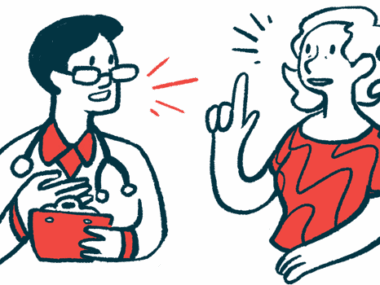Daily meditation with headband may aid Cushing’s surgery recovery
Study compared outcomes of 27 patients with MUSE-2 headband, 81 without it
Written by |

Daily meditation with the help of headband that tracks brain activity and serves as a personal meditation coach may help people with Cushing’s syndrome have less pain and a better experience while recovering from surgery.
That’s according to new research presented at the Endocrine Society Annual Meeting (ENDO 2024) in Boston. The presentation was titled, “Impact Of Wearable Brain Sensing Meditation Device On Quality Of Life In Patients Recovering From Hypercortisolism Following Surgical Intervention: A Prospective Longitudinal Cohort Study.”
Cushing’s disease is a disorder wherein a tumor in the brain’s pituitary gland triggers the production of too much cortisol, a stress hormone. Surgery to remove the tumor can cure the condition, but patients typically see a sudden dip in cortisol levels, which can lead to fatigue, muscle aches, and mood swings. This is known as glucocorticoid withdrawal syndrome (GWS). Glucocorticoids are a class of hormones that include cortisol.
“Limited interventions have been explored to alleviate the symptoms of GWS and improve patients’ quality of life,” wrote the researchers, who said meditation has been found “to enhance post-surgical recovery in patients with other conditions and offers a promising intervention for GWS.”
Daily meditation with a headband
Here, researchers studied whether meditation with a specialized headband that tracks brain activity might help people with Cushing’s disease and other forms of endogenous Cushing’s syndrome better recover from surgery. Endogenous Cushing’s refers to all forms of the condition wherein high cortisol emanates from issues within the body, such as the presence of a tumor.
“With little known about the interventions that can help patients experiencing glucocorticoid withdrawal syndrome, our group is the first to explore meditation to enhance post-surgical recovery,” Jasmine Saini, a researcher at Mayo Clinic, said in a press release.
The study included 27 patients who were offered a MUSE-2 headband, a commercially available, portable device that can help guide meditation and instructed to meditate for at least 10 minutes a day for the first 12 weeks after surgery. Their outcomes were compared with those of 81 other patients who had similar demographic and clinical features, but didn’t use the headband after surgery.
Quality of life was assessed in both groups with a standardized test called the 36-item Short Form Health Survey, or SF-36.
The patients who meditated using the headband had significantly greater improvements in SF-36 domains related to physical function and body pain. No significant improvements were seen in SF-36 domains regarding mental and emotional health in either group.
“The use of wearable … device for meditation was associated with improvement in the quality of life of patients recovering from hypercortisolism [high cortisol levels], particularly in the domains of body pain and physical functioning,” wrote the researchers, who said, while more research is needed, the results indicate daily meditation guided by devices like the MUSE-2 headband may aid Cushing’s patients recovery after surgery.
“Despite a small sample size and short follow-up, results demonstrating improvement in body pain and physical functioning domains in the MUSE cohort are promising,” Saini said. “We are motivated to study biofeedback meditation’s impact on quality of life in a longer follow-up. With our preliminary results, we are hopeful this device can be used to alleviate symptoms of glucocorticoid withdrawal.”






